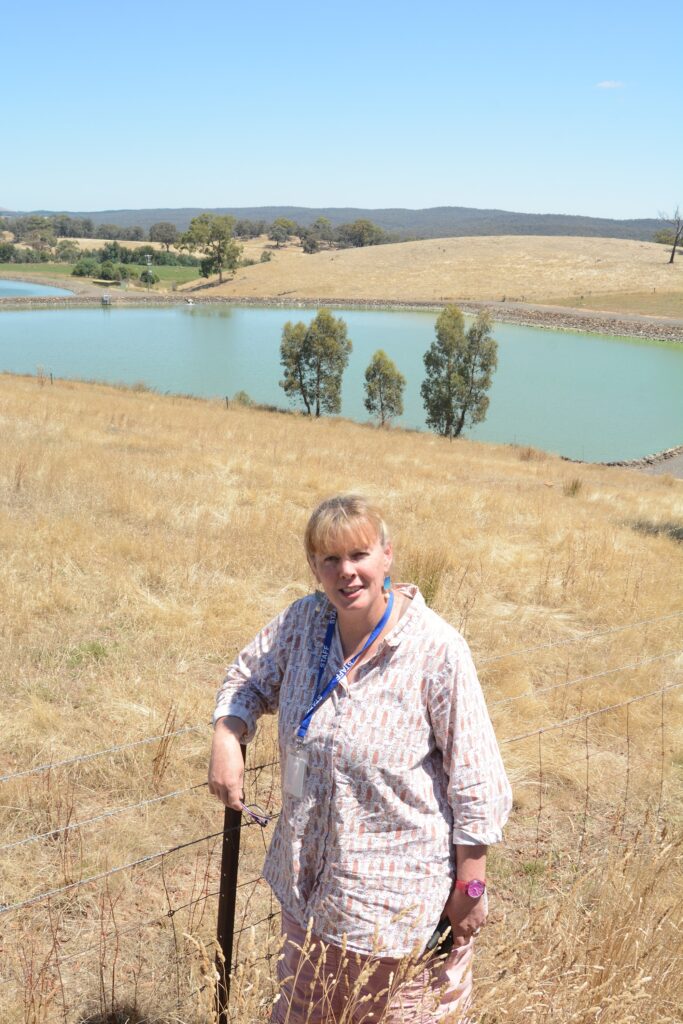February 14th, 2021Dr Monica Nolan at the COVID front line
The wastewater surveillance work is a collaborative effort between the Department of Health and Human Services, Victorian water utilities and laboratories, and research partners.
Dr Nolan, who lives with her husband, sculptor Issa Ouattara, trained as a field epidemiologist with the US Center for Disease Control’s disease detective fellowship program and has long divided her time living at their historic church home with public health work in Africa. Most recently she co-lead the Makerere University-Johns Hopkins University Research Collaboration in Uganda.

All that changed in March 2020 when Dr Nolan was visiting Australia and could not leave due to COVID-related border closures. In May she joined the Department of Health and Human Services, Victoria as the epidemiology lead for the wastewater surveillance program for SARS-CoV-2, the virus that causes COVID-19.
When new diseases such as COVID emerge, epidemiologists investigate how it is spread, the type of illness it causes, people at risk and define what steps can be taken to limit its spread and impact.
Victoria is also participating actively in the national Collaboration on Sewage Surveillance on SARS-CoV-2, modestly known as “ColloSSoS” coordinated by Water Research Australia.
“There wasn’t a program of wastewater surveillance in Victoria before the emergence of SARS-CoV-2 although there have been prior applications for pathogens like polio. This is really an innovative program which has required us and our partners to rapidly develop and start up laboratory and sampling methods and develop capacity for real time implementation.
“There’s been pioneering work globally, particularly in the Netherlands but certainly Australia and Victoria has been part of the vanguard of establishing these programs.”

Of course Australia has been very different from most other countries because the country has relatively few COVID-19 cases. So the DHHS has been able to use the testing technology for early detection and the presence of possible undiagnosed cases.
When traces of the virus are found it is significant and serves as a very effective means of monitoring possible COVID incursions and triggering a call to test if symptomatic, and intensifying wastewater sampling to monitor trends.
Last December, Daylesford made the news when a sample from the inlet to the Daylesford wastewater treatment plant picked up virus fragments. The announcement caused a brief flurry of alarm but ultimately provided a sense of security as well. The discovery affirmed the effectiveness of a program which, up until then, had been doing its work in relative local obscurity.
However, Dr Nolan says the program is part of the toolkit and works in conjunction with individual testing as well as reinforcing the behavioural practices that keep people safe, including social distancing and correct use of masks.
“When we find traces in the sewage system, we can’t tell if they are early or undiagnosed, in their infectious period or if it is someone who has had COVID previously and recovered and still doing what we call ‘shedding’ parts of the virus, but who is not an infection risk.
“So the sewage surveillance is quite a blunt population level instrument, we are looking to see if it is there. And in the case of Daylesford, we only found it once with follow-up samples not showing any traces which was reassuring.”
However, Dr Nolan would like to point out that there have been examples in the state which have affirmed how effective water testing can be in conjunction with contact tracing and other outbreak control methods.
“There was a wastewater detection in Lakes Entrance (on January 1) where within a short period we were able to make a link with a couple from the Black Rock Thai restaurant infection cluster (on December 21) that had visited the town during the same period. That was an interesting proof of concept.”
The testing process works by the sampling team drawing a wastewater sample before the wastewater is treated. They then conduct a PCR (polymerase chain reaction) test similar to that used for individual diagnosis. PCR testing greatly reduces the time required to test for certain types of viruses and bacteria, from days to hours.
Recently the DHHS has been quite busy with eight detections across the state including one at nearby Castlemaine on January 27.
“It is the first detection there and we are following it up with more sampling to make sure that there isn’t an infectious person or unknown community transmission.” says Dr Nolan. “It is unlikely, but that’s the reason this work is done.”
Words & image: Tony Sawrey










